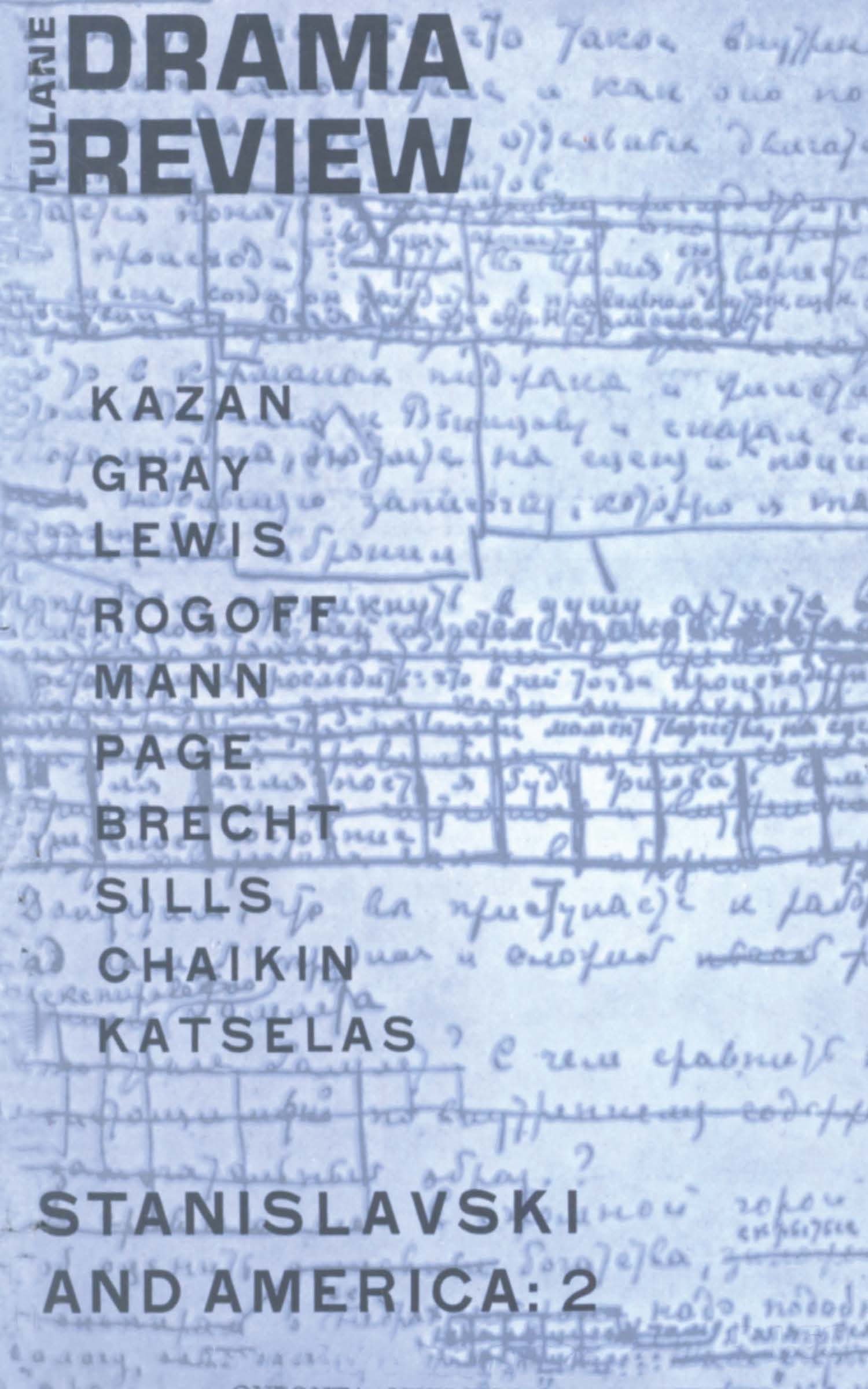Article contents
Two Lectures
Published online by Cambridge University Press: 23 November 2021
Extract
The reconstructed theatre, using every technical means at its disposal, will work with film, so that scenes played by the actor on stage can alternate with scenes he has played on screen. Going further, a dramatic production could become a kind of revue in which the actor uses dramatic, operatic, and film methods, as well as those of the ballet dancer, acrobat, gymnast, clown. And, of course, the play's division into acts, the inflexibility of conventional dramatic structure, must be superseded by episodes after the model of Shakespeare and the dramatists of the old Spanish theatre, making it possible to abandon the antiquated pseudo-classical unities of time and action. We are entering upon a new phase of playwriting. We are creating a new kind of play.
- Type
- Research Article
- Information
- Copyright
- Copyright © The Drama Review 1966
References
1 Originally a lecture given by Meyerhold in 1936. Published in Iskusstvo Kino, Number 6, pp. 113-122, Moscow, 1962, as edited by A. Fevral'skii.—Translator's note.
2 The Vasil'evs, G. N. (1899-1946) and S. D. (b. 1900), directed the memorable Soviet film Chapaev (1934). G. M. Kozintsev (b. 1905) and L. Z. Trauberg, who directed silent films iuch as Gogol's Overcoat (1926), later received Stalin prizes for films with a message, such as the trilogy About Maxim (1935-1939).—Translator's note.
3 In Leningrad, 1936, Meyerhold had given a talk, “Meyerhold against ‘Meyerholdism.’”—Soviet editor's note.
4 This account of how the Tramp was born seems to have been taken verbatim from a footnote in Poulaille, Henry, Charles Chaplin (Paris: 1927), p. 8.Google Scholar There it is attributed to Siemsen, Hans, author of Charles Chaplin (Leipzig: 1924).Google Scholar Chaplin himself gives a wholly different account in My Autobiography (New York: 1964), pp. 144-147.—Translator's note.
5 Il'inskii, Igor (b. 1901), today an actor at the Maly Theatre in Moscow, had his early successes in comic roles under Meyerhold's direction, in the Meyerhold Theatre production mentioned here of Ostrovsky's Forest and in Mayakovsky's Mysteria-Bouffe and The Bedbug. Along with the theatre director N. Okhlopkov, Il'inskii has, since Meyerhold's recent rehabilitation, publicly given him his due.—Translator's note.
6 The use of the word “mask,” typical of Meyerhold, meant not a stereotype, but a constant, realistic characterization, close to the actor's personality.—Soviet editor's note.
7 Kornei Chukovsky (b. 1882), a kind of Robert Frost or “grand old man” of Russian literature.—Translator's note.
8 Kerzhentsev, P. M. (1881-1940), as administrator of the arts from 1936 to 1938, had the task of bringing artists to terms with socialist realism; he signed the order to close the Meyerhold Theatre on January 9, 1938. The artists he is here cited as recommending are all realist painters.—Translator's note.
9 Eisenstein's essay, from which the description “Lighting a Stove” comes, was published as an afterword to pamphlet, N. Kaufman's Japanese Cinema (Moscow: 1929)Google Scholar and appeared in English in Film Form, edited and translated by Jay Leyda (New York: 1949).—Translator's note.
- 1
- Cited by


